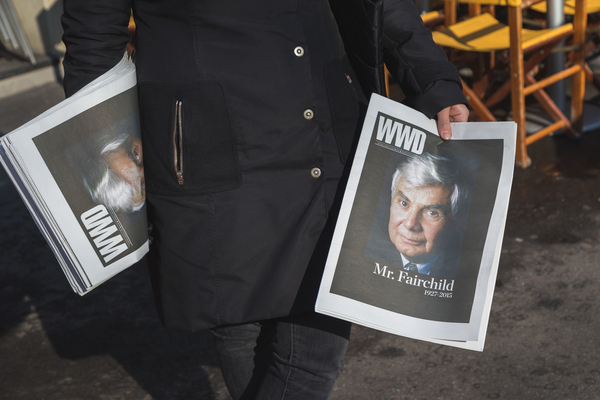The Cut reports that Bridget Foley, the executive editor of Women’s Wear Daily, and a pillar of the paper’s fashion coverage for more than 30 years, was laid off from her position. “It’s a huge part of my life,” Foley said in an interview with The Cut. “It’s been a privilege to cover this industry through such remarkable times of change. I was privileged as a chronicler, and also as a participant, to be involved at a very heady time in fashion and media.” James Fallon, the editorial director of Fairchild Fashion Media, which includes WWD, did not respond to a request for comment.
The startling thing about looking at old fashion-show footage is how much the front rows stay the same. For an industry predicated on change, stasis often rules. Anna Wintour has reigned over Vogue since 1988. The critic Tim Blanks’s white quiff has been easy to spot since the 1990s (though it was darker then). There among them, since the mid-1980s, when she arrived at WWD from the California Apparel News, the only other job she has held as an adult, was Foley, who could be alternatingly imperious and gentle in her fashion-show reviews and her regular column, “Bridget Foley’s Diary.” (Ever the workhorse, Foley had three bylines on WWD.com on January 10.)
She has been a fixture in the industry long enough to nurture design talents now taken as titans. “She is one of but a handful of writers who has watched my career from its infancy,” Michael Kors told the New York Times in 2013, for a profile of Foley that positioned her squarely, as the headline had it, in “The Seat of Power.” She has long championed Marc Jacobs, and while some occasionally wonder whether their association is too close for critical distance (murmurs she denies), she is one of the few working today to be able to say she was at his famous 1992 grunge show for Perry Ellis, which earned him both lasting fame and a pink slip. She literally wrote the book on Tom Ford.
Women’s Wear Daily itself, which dates back to 1910, has undergone sea changes in recent years. Foley first arrived at that paper in the era of John Fairchild, the gleefully pugnacious editor who defibrillated what had been a fusty trade organ with celebrity coverage, society intrigue (WWD sent photographers to hover outside power-lunch spots like La Grenouille and Quo Vadis), gossip, and internecine Seventh Avenue feuds, some of its own instigation. In the years since his retirement, in 1997, WWD settled back into a calmer, more decorous outlet, through several changes of ownership. Condé Nast bought Fairchild Publications, as the company was then known, in 1999, from longtime owner Disney, then sold it to Penske Media in 2014, where it currently lives alongside Variety, Deadline, and Rolling Stone. In 2015, WWD scaled back its print edition from daily to weekly, and then in 2017, to occasionally for special issues, focusing instead on daily digital content.
From The Cut:
With Foley out at WWD — though potentially still contributing — the list of established fashion critics, always a short one, gets shorter. Authority in the field is rare, and this change chips away at it further, though it’s worth wondering whether it might also open up space for newer voices. Without a serious body of critics, can designers expect to get the kind of feedback they need to grow?
—
Photo Credit: Tinxi/ Shutterstock.com
